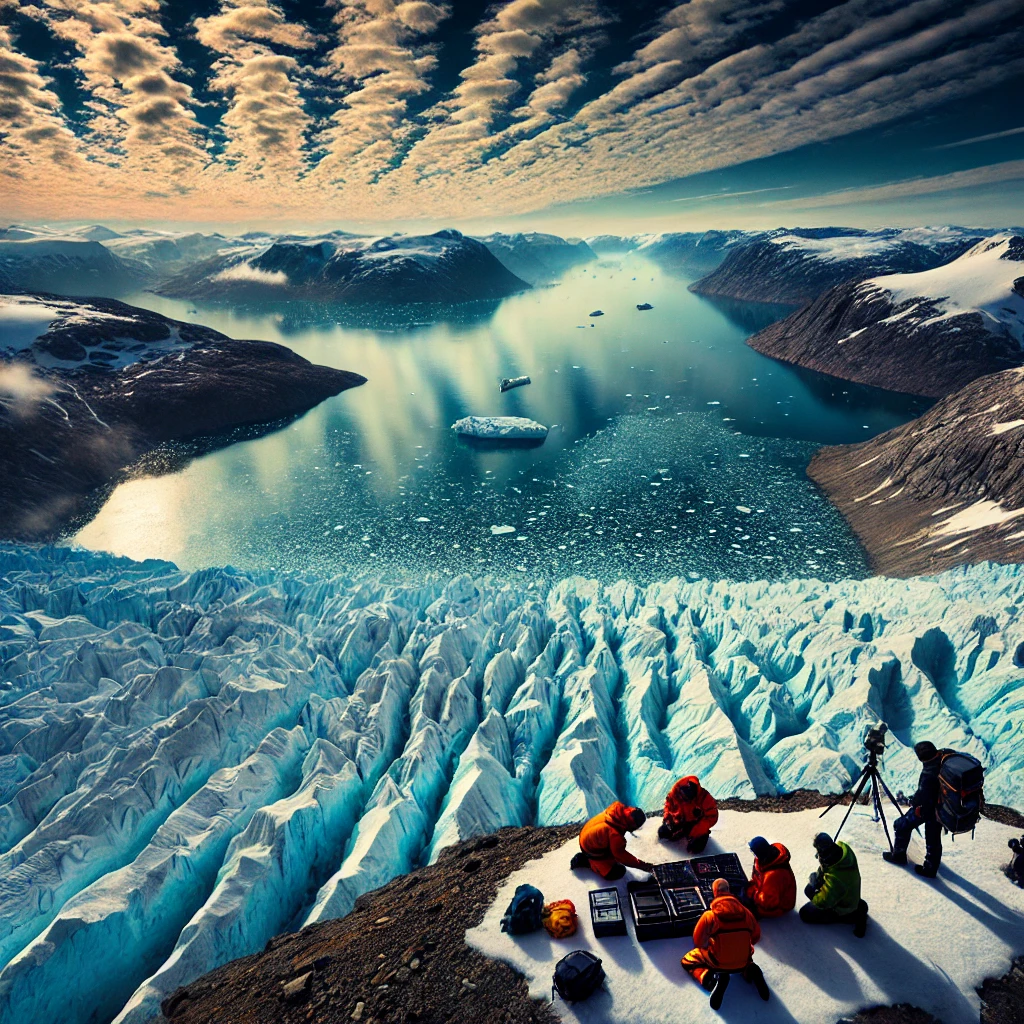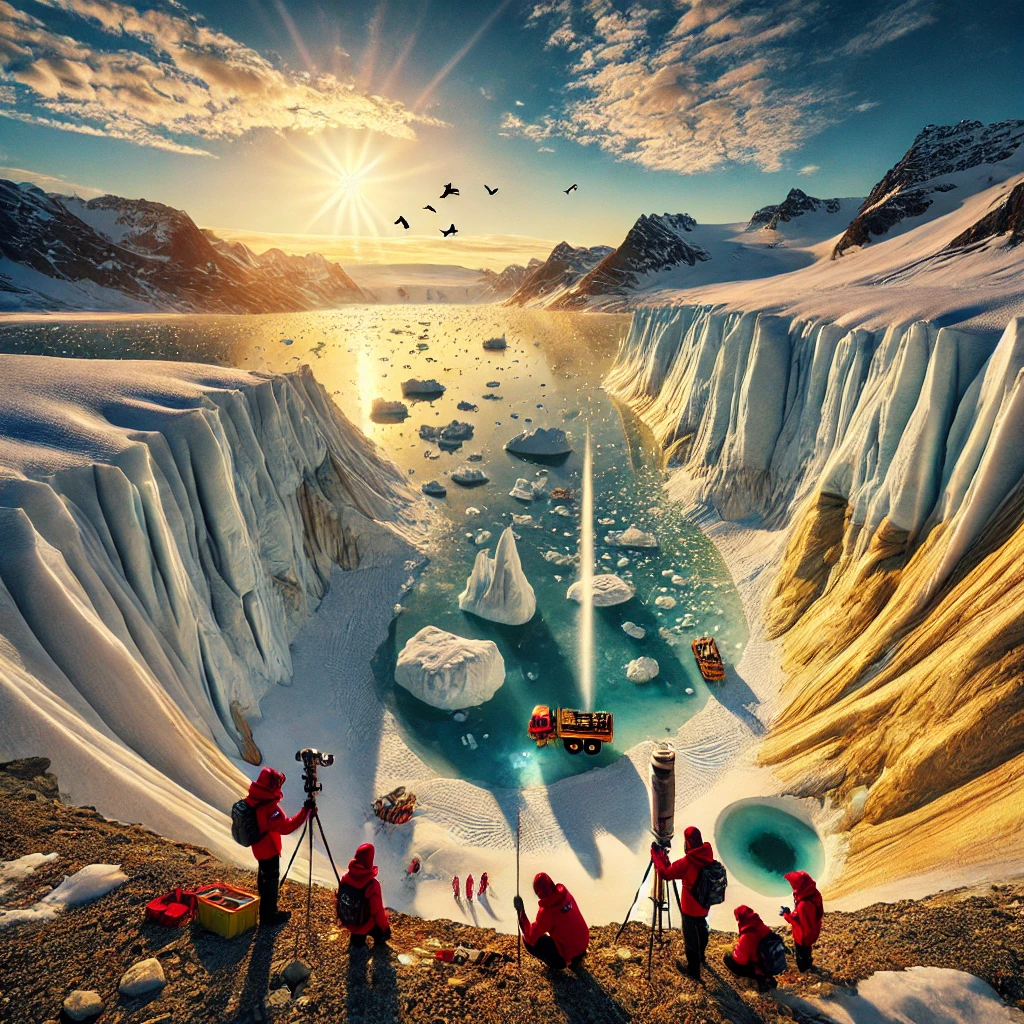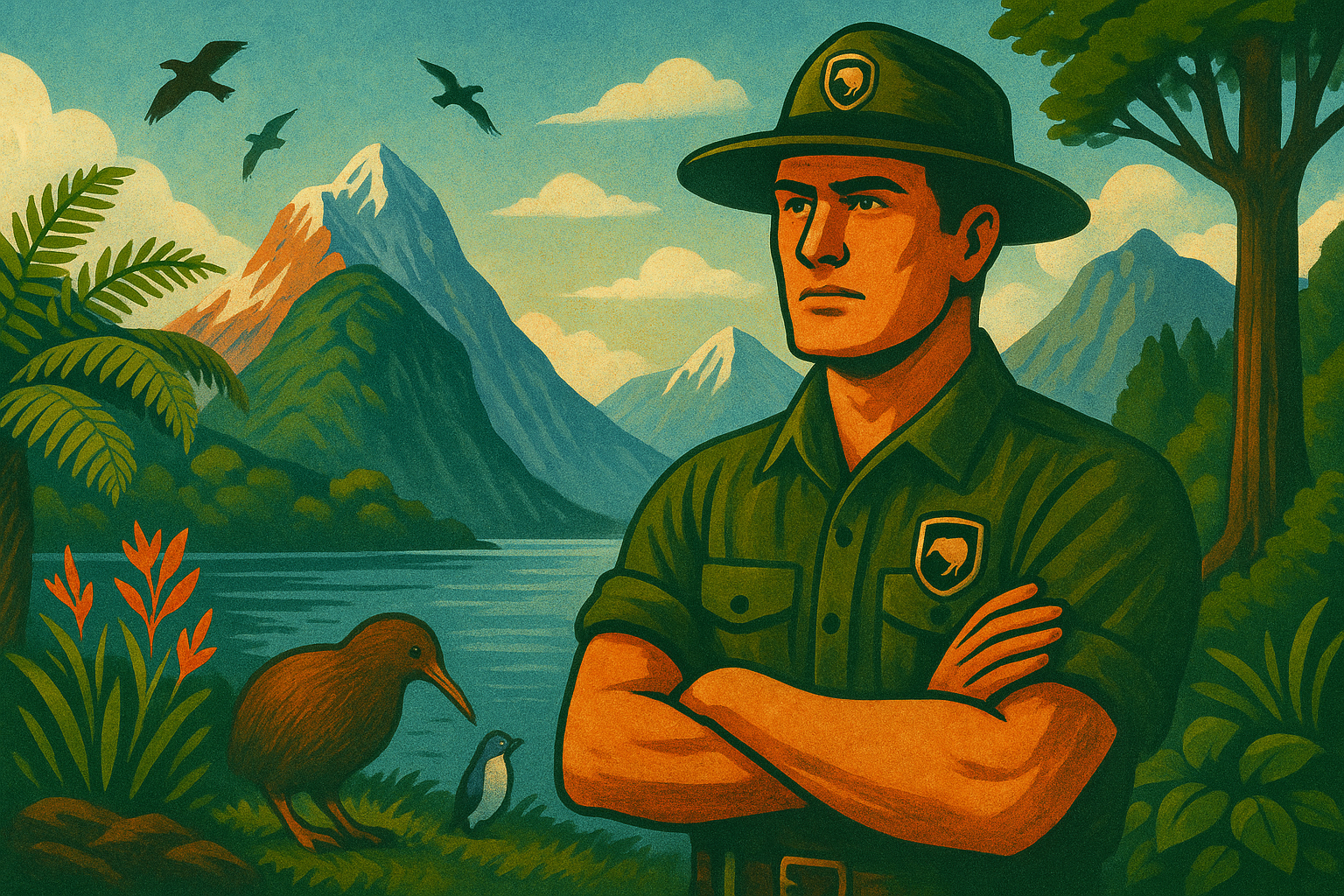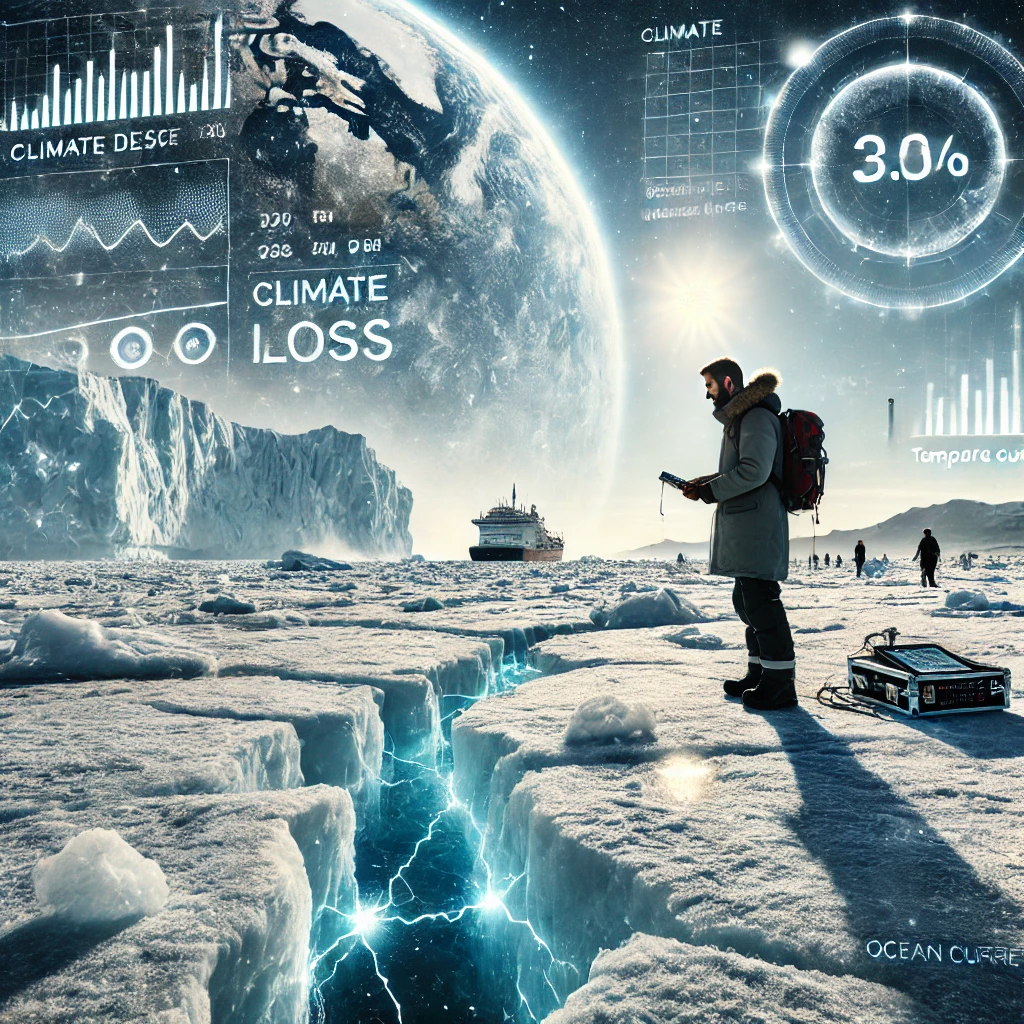Table of Contents
Introduction to Greenland’s Glaciers
Greenland‘s glaciers represent one of the most significant and distinct features within the Earth’s cryosphere. Covering approximately 1.7 million square kilometers, the Greenland Ice Sheet is the second-largest body of ice in the world, following Antarctica. This colossal ice mass plays a critical role in the global climate system, acting as a key indicator of climate variability and change. Over the past century, scientists have observed significant changes in the dynamics and stability of these glaciers, which serve as barometers for shifts in environmental conditions.
The significance of Greenland’s glaciers extends beyond their sheer size; they are instrumental in regulating the Earth’s climate. These glaciers not only influence sea levels through the melting process but also affect ocean circulation and atmospheric temperatures. Historically, the Greenland Ice Sheet has exhibited patterns of stability and instability, reflective of various climatic epochs, including warmer periods associated with natural climate variability. The current trend towards accelerated glacier melting is alarming, as it suggests the onset of a new era shaped by anthropogenic climate change.
As the global climate continues to warm, Greenland’s glaciers have become critical subjects of study for scientists seeking to understand the broader implications of this warming trend. The disintegration of these ice masses is raising concern due to their potential contribution to rising sea levels, which could impact coastal populations worldwide. Furthermore, the changes in ice melt patterns can have far-reaching effects on global weather systems, agriculture, and biodiversity.
This introduction aims to set the stage for a deeper exploration of the effects of Greenland’s glaciers on the planet’s future. By examining their size, significance, and historical context, we can gain invaluable insights into one of the most pressing challenges of our time—the ongoing climate crisis and its impact on human existence.

The Science Behind Glacial Melting
The process of glacial melting is a complex interplay of various scientific factors influenced primarily by climate change. Rising global temperatures, a critical factor, are causing significant alterations in the conditions around glaciers. The increase in average temperatures has been observed globally, with polar regions exhibiting even more pronounced warming. This phenomenon leads to surface melting of the ice, contributing to the overall reduction of glacier mass.
Another significant aspect is the change in precipitation patterns. In some regions, higher temperatures result in more precipitation falling as rain rather than snow during the winter months. Since snow is essential for building and maintaining glacial ice, this shift impacts the glacier’s stability. When rain falls on snow-covered areas, it can lead to the melting of underlying layers, increasing the overall melting rate during warmer months.
Furthermore, oceanic conditions play a crucial role in glacial melting, particularly for outlet glaciers that terminate in the sea. Warmer ocean temperatures lead to increased melting of glacial fronts, exacerbating the rate at which glaciers retreat. This melting process is intensified by the intrusion of warmer waters into fjords where glaciers are located, which accelerates the disintegration of ice shelves.
The retreating glaciers also contribute to rising sea levels, which have far-reaching implications for coastal communities and ecosystems. The scientific understanding of these mechanisms is critical not only for predicting future impacts on glacial systems but also for assessing the broader implications of climate change. Monitoring these changes helps scientists develop models that forecast future conditions, providing insights into how our planet may evolve in response to ongoing global climatic shifts.
Impacts of Glacial Melting on Sea Level Rise
The melting of Greenland’s glaciers has emerged as a significant contributor to global sea level rise, a phenomenon that poses pressing concerns for many coastal communities around the world. As the planet warms, glaciers in Greenland are experiencing unprecedented rates of melting, leading to substantial increases in sea levels. Current research indicates that Greenland’s ice sheet is losing approximately 280 billion tons of ice per year, significantly impacting global sea levels.
According to projections from the Intergovernmental Panel on Climate Change (IPCC), continued ice loss from these glaciers could result in an increase of 30 to 60 centimeters (12 to 24 inches) in sea level by the end of the century. This rise may seem incremental; however, even small increases can lead to disastrous consequences, including increased flooding, erosion, and the displacement of populations in low-lying coastal regions. As such, many cities around the world face threats to their infrastructure, water supplies, and overall sustainability.
The implications of glacial melting extend beyond just physical changes to coastlines. Ecosystems are at risk as the salinity of oceans changes and habitats, particularly those of marine species, are disrupted. Additionally, economic impacts are substantial, as coastal communities may need to divert resources towards mitigation and adaptation strategies. Some municipalities are already investing in sea walls and other protective measures in anticipation of future sea level rise related to glacial melt.
The urgency of addressing these climate impacts cannot be overstated. Global efforts focused on reducing greenhouse gas emissions are essential to mitigate further glacial melting and its repercussions. As research continues to evolve, it is clear that understanding the consequences of Greenland’s glacier loss on sea level rise is crucial for preparing and protecting our planet and its inhabitants.
Ecosystem Changes Due to Glacial Retreat
The retreat of glaciers in Greenland has profound implications for local ecosystems and the species that inhabit them. As glaciers melt, the immediate landscape undergoes significant transformation, fostering new habitats while threatening existing ones. For instance, the thawing ice provides a more hospitable environment for certain plant species that thrive in the newly exposed soil. However, these changes can lead to the decline of species adapted to cold climates, causing shifts in local biodiversity.
One of the most notable repercussions of glacial retreat is observed in the habitats of wildlife. As glaciers shrink, many species that rely on cold-water ecosystems, such as certain fish and marine mammals, face mounting challenges. These creatures depend on the stability that glacier-fed rivers and lakes provide. The warming waters, coupled with resulting shifts in salinity and sedimentation, can disrupt breeding cycles and food availability, leading to declines in fish populations and affecting species like seals and polar bears that prey on them.
Moreover, glacial melt influences the livelihoods of indigenous peoples in Greenland. Their traditional practices, such as fishing and hunting, are heavily reliant on stable ecosystems. As fish stocks decline and animal migrations change due to habitat alterations, these communities face food insecurity and diminished cultural practices. The shifting dynamics not only impact their way of life but also challenge their connection with the land and reliance on its resources.
As we examine the ecological shifts caused by glacial retreat, it becomes evident that the loss of glaciers triggers a cascade of changes. The balance of local ecosystems is delicate, and as temperatures continue to rise, the consequences of these alterations may further complicate the relationship between wildlife and indigenous communities, necessitating adaptation and resilience strategies to navigate this evolving landscape.
Lessons from Greenland’s Past Glacial Periods
Greenland’s geological history provides a compelling lens through which to examine past climate variations, especially during previous glacial periods. Understanding these past events enables researchers to identify patterns that can inform current environmental trends and future projections. Ice core samples taken from Greenland reveal valuable information about historical temperature fluctuations and atmospheric composition. Through analysis of these samples, scientists have discovered that similar climatic shifts have occurred in cycles over thousands of years, driven primarily by natural factors such as variations in Earth’s orbit and solar radiation.
During glacial periods, the extensive ice sheets that covered Greenland played a crucial role in influencing global sea levels and climate conditions. For instance, when temperatures dropped, the accumulation of snow and ice thickened, contributing to lowered sea levels. Conversely, during warmer interglacial periods, significant melting occurred, which raised sea levels and altered ocean salinity and currents. These shifts demonstrate a complex interplay between ice, water, and climate that is essential for understanding ongoing changes in our environment.
Furthermore, the impact of these past glacial periods on local ecosystems and industries is noteworthy. Communities that relied on hunting, fishing, and gathering had to adapt to changing resources as the glaciers advanced and retreated. Similarly, current industries face challenges due to the rapid changes in climate, which are akin to those experienced in the past but accelerated by human activity. This historical context aids in grasping the stakes involved in today’s environmental issues, reinforcing the necessity for adaptive strategies to mitigate the effects of climate change.
In summary, by examining Greenland’s past glacial periods, we gain essential insights into how climate variations shape not only the environment but also human activities. These lessons underline the importance of considering historical data when predicting future climate impacts and developing effective responses to our changing planet.
Global Policy Responses to Climate Change
The responses to climate change have evolved significantly in the past decades, marked by a series of international agreements and national policies aimed at mitigating its impacts, particularly the alarming rates of glacial melting observed in places like Greenland. The Paris Agreement, adopted in 2015, stands out as a pivotal global accord, with nations committing to limit global warming to well below 2 degrees Celsius above pre-industrial levels. This agreement mobilizes countries to set national targets for emissions reductions, which are crucial for mitigating the effects of climate change. Notably, the commitment of signatory countries to adhere to these targets showcases a unified approach towards a common goal of environmental resilience.
At the national level, governments have enacted various policies aimed at reducing greenhouse gas emissions and promoting sustainable practices. For instance, many countries have invested in renewable energy sources, such as wind and solar power, to decrease reliance on fossil fuels. Additionally, some national governments have set ambitious timelines for phasing out coal and enhancing energy efficiency in buildings and industries. These policies, however, require consistent evaluation to ensure effectiveness and adaptability to the rapidly changing climate landscape.
Grassroots movements have also gained momentum, emphasizing the importance of public engagement in climate action. From climate strikes led by youth activists to local community initiatives aimed at promoting sustainability, these movements play a crucial role in raising awareness and influencing policy. They pressure governments to take more definitive actions towards climate change mitigation, contributing significantly to the broader policy framework. Collective action, embodying the global community’s commitment to preserving our planet, can create meaningful change, particularly regarding the preservation of glacial regions that are vital indicators of climate health.
Technological Innovations and Climate Solutions
Amidst the pressing challenge of climate change, innovative technologies and strategies are emerging to mitigate its adverse effects, particularly as it pertains to the conservation of glaciers such as those found in Greenland. The significance of these methods cannot be overstated, as they offer both immediate solutions and long-term sustainability for our planet’s fragile ecosystems.
One notable area of advancement is the development of renewable energy sources such as wind, solar, and geothermal power. As traditional fossil fuels continue to deplete our environment, renewable energy emerges as a cleaner, sustainable alternative that significantly reduces greenhouse gas emissions. For example, harnessing the consistent winds of Greenland may lead to creating wind farms that can not only supply local energy demands but also contribute to global energy markets. The transition to these sustainable energy sources is essential in reducing the impact of climate change on glaciers.
In addition to renewable energy, carbon capture technologies are gaining traction. These systems capture carbon dioxide emitted from industrial processes, preventing it from entering the atmosphere. By sequestering carbon, these innovations contribute to maintaining the climatic balance necessary for the preservation of glaciers. Several experimental projects are underway, showcasing promising results in reducing atmospheric carbon concentrations.
Moreover, enhanced weathering techniques are being explored, which involve spreading minerals on land or oceans to facilitate the natural absorption of carbon dioxide. By accelerating the natural processes that sequester carbon, this approach targets the excessive CO2 levels that contribute to global warming and glacier melt.
Finally, scientific advancements in climate modeling enable researchers to predict future scenarios based on current data trends. This predictive capability not only informs climate policies but also drives public awareness of the critical challenges facing glaciers in Greenland and beyond. Through these innovative technologies and strategies, it is possible to forge a path towards a more sustainable future, thereby safeguarding our planet’s glaciers and ensuring ecological balance.
The Role of Education and Advocacy
Education and advocacy play crucial roles in addressing the pressing challenges posed by climate change and the implications for Greenland’s glaciers. As the impacts of global warming become increasingly apparent, fostering public awareness through comprehensive educational initiatives is essential. These initiatives aim to promote scientific literacy, allowing individuals to understand the complexities of climate change and its repercussions on natural ice reserves.
Various programs have emerged that emphasize the significance of glaciers as vital indicators of climate health. Through workshops, online courses, and community events, participants are educated on the scientific processes behind glacier dynamics, their role in the Earth’s climate system, and the far-reaching effects of their melting. Such educational endeavors not only inform the public but also empower them to take informed actions in their own lives, contributing to broader environmental preservation efforts.
Advocacy is another pivotal component in this landscape. Many organizations engage in advocacy campaigns that spotlight the urgency of protecting Greenland’s glaciers. These campaigns aim to influence policy decisions, urging governments and corporations to prioritize sustainable practices and to take collective action against climate change. The integration of educational outreach with advocacy creates a synergistic effect, where an informed public is more likely to support crucial policy changes. Furthermore, these campaigns often mobilize community members to participate in local initiatives, fostering a sense of stewardship over the environment.
In conclusion, the synergy between education and advocacy is vital in combating the climate crisis and safeguarding Greenland’s glaciers. By promoting awareness and understanding of climate issues, society can empower individuals to contribute to solutions. This proactive approach is necessary if we are to confront the mounting challenges posed by climate change effectively and sustainably.
Conclusion: The Path Forward
Greenland’s glaciers stand as monumental indicators of climate change, revealing not only the current state of our environment but also serving as a precursor to future implications. The extensive melting of these glaciers contributes significantly to global sea level rise, a phenomenon that threatens coastal communities worldwide. Understanding the dynamics of the Greenland Ice Sheet is crucial for developing effective climate policies and strategies aimed at mitigating environmental impacts.
Throughout this blog post, we have explored the intricate relationship between the melting glaciers and the broader implications for our planet. The lessons drawn from Greenland’s glaciers underscore the urgency with which we must respond to the accelerating pace of climate change. Adaptation and resilience are key components in our collective response, as they empower communities and nations to navigate the inevitable consequences of a warming planet.
However, the responsibility does not solely lie with governments and organizations. Each individual has a role to play in combating climate change. By making conscious choices in our daily lives—such as reducing waste, consuming less energy, and supporting sustainable practices—we can contribute to a larger movement that prioritizes planetary health. It is through collective action that we can safeguard biodiversity and the ecosystems that are essential for our survival.

In light of these considerations, understanding the lessons that Greenland’s glaciers provide is not an academic exercise; it is a moral imperative. As we confront the realities of a changing climate, we must champion efforts that raise awareness, encourage action, and inspire hope for a sustainable future. By embracing responsibility, both individually and collectively, we can pave the way toward a healthier planet for generations to come.





